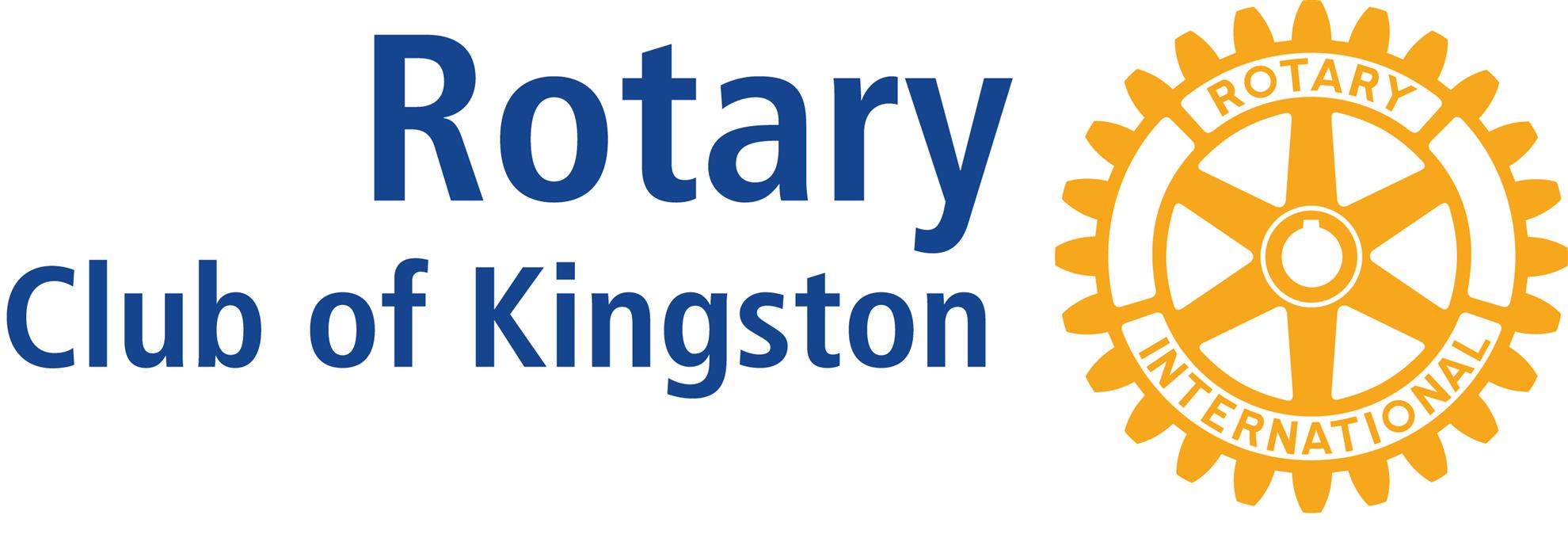
Osteoarthritis (OA) is a serious disease which affects 240 million people worldwide, twice as many women as men, severely limits people’s mobility and increases the risk of heart disease. There is no cure.
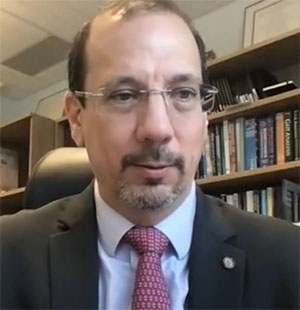 Research under the direction of Dr Kevin Deluzio, Dean of the Faculty of Engineering and Applied Science and Director of Queen’s Human Mobility Research Laboratory is trying to bring hope to the millions afflicted if not a cure, then at least a significant reduction in pain.
Research under the direction of Dr Kevin Deluzio, Dean of the Faculty of Engineering and Applied Science and Director of Queen’s Human Mobility Research Laboratory is trying to bring hope to the millions afflicted if not a cure, then at least a significant reduction in pain.Professor Deluzio, a biomechanical engineer spoke to the Rotary Club of Kingston last Thursday. Using slides, he made the point that our knees and hips are organs just like our heart.
An organ is “a collection of tissues joined in a structural unit to serve a common function” he said. For example, a knee joint is made up of many parts: bones, ligaments, cartilage, fluids, muscles, nerves, and connecting tissue, all functioning together in a common function.”
Deluzio describes the knee joint as a “truly remarkable engineering feat” with a “common function to facilitate movement and transfer forces.” “Even standing still,” he said, the knee joint supports a weight 2 to 3 times your body weight.
After briefly taking us through the development of applying the engineering of moving machines to the movement of our body parts or “biomechanical engineering” Deluzio described how we predominately view our moving parts while at rest using MRI, X-rays and CT scans.
During his career, Deluzio has developed the idea that “gait” in our limbs is a vital function like “pumping” is to the heart or “breathing” is to our lungs. The difference, however, is that “gait” is a learned skill. It takes seeing it and motivating yourself to learning it.
Since the 1990’s, Deluzio has been working at Queen’s Human Mobility Research Laboratory (HMRL), located in the Hotel Dieu facility, using “marker-based motion capture”. The goal at the HMRL is to use the data collected in this manner on gait analysis and apply it to the disease of osteoarthritis.
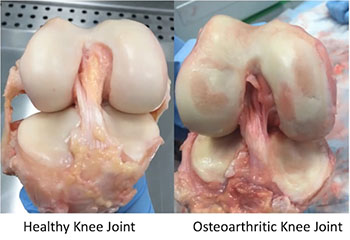 An osteoarthritic knee can “no longer facilitate movement and transfer forces effectively” because the articular cartilage surrounding the bone is no longer extremely low in friction as it was designed to be. Comparing photos of a healthy and osteoarthritic knee joint, the healthy knee showed the cartilage as smooth and shiny while the osteoarthritic knee showed wear spots where it had rubbed off. Add to that the fact that in the good knee the outer shell of the cartilage has no nerve endings so no pain is felt, whereas when the cartilage is worn away all the nerves underneath are exposed, and severe pain can be felt.
An osteoarthritic knee can “no longer facilitate movement and transfer forces effectively” because the articular cartilage surrounding the bone is no longer extremely low in friction as it was designed to be. Comparing photos of a healthy and osteoarthritic knee joint, the healthy knee showed the cartilage as smooth and shiny while the osteoarthritic knee showed wear spots where it had rubbed off. Add to that the fact that in the good knee the outer shell of the cartilage has no nerve endings so no pain is felt, whereas when the cartilage is worn away all the nerves underneath are exposed, and severe pain can be felt.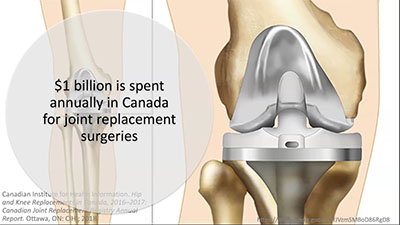 It is this pain that causes hip surgery to be the second most common surgery after the heart. Deluzio termed joint replacement a “salvage operation”, and “barbaric” because although it gets rid of the pain, it replaces the bone with metal and plastic adding it is a real challenge for our health system as it is costly and so many people need it that we can’t keep up with the demand.
It is this pain that causes hip surgery to be the second most common surgery after the heart. Deluzio termed joint replacement a “salvage operation”, and “barbaric” because although it gets rid of the pain, it replaces the bone with metal and plastic adding it is a real challenge for our health system as it is costly and so many people need it that we can’t keep up with the demand.Deluzio, showed how around 2000 using button marker analysis, we were able to prove that osteoarthritis is a mechanical disease and is primarily caused by the frequency of the load and not the weight of the load. Think of a person using a jackhammer.
This also permitted research to determine who would benefit from surgery or not and to improve knee brace design so that they eliminated most of the pain and delayed surgery, sometimes for decades.
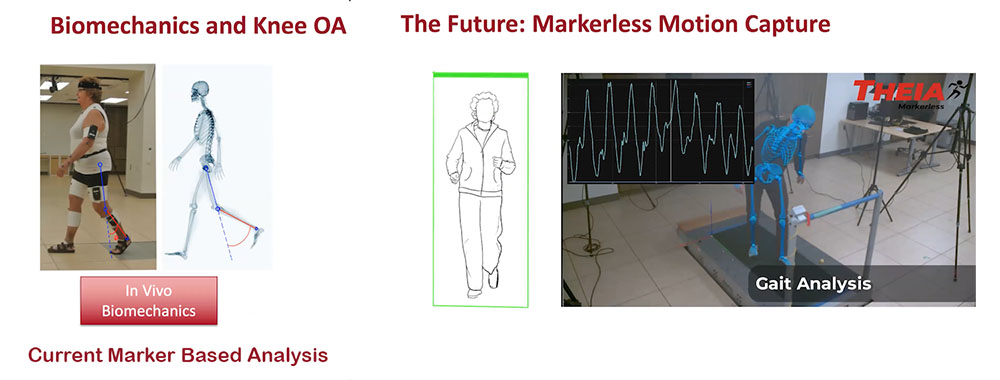
Today, at the leading edge, we use “markerless motion capture” combined with artificial intelligence software and machine learning. Examples are “depth sensors”, “inertial measurement units” and video analysis, the latter by a Kingston company Theia. Theia uses video and AI to train a neural network. It also permits many more subjects to be analyzed quickly in any environment, not just a lab.
Deluzio says we are now on the threshold of using this technology to create a three-dimensional movement analysis of knee movement or gait analysis rather than the static pictures we currently use before surgery.
